Science & Engineering Libraries
2018 Winners of the Ig® Nobel Prize Announced!!
…For achievements that first make people LAUGH then make them THINK
MEDICINE PRIZE [USA] — Marc Mitchell and David Wartinger, for using roller coaster rides to try to hasten the passage of kidney stones.
REFERENCE: “Validation of a Functional Pyelocalyceal Renal Model for the Evaluation of Renal Calculi Passage While Riding a Roller Coaster,” Marc A. Mitchell, David D. Wartinger, The Journal of the American Osteopathic Association, vol. 116, October 2016, pp. 647-652.
ANTHROPOLOGY PRIZE [SWEDEN, ROMANIA, DENMARK, THE NETHERLANDS, GERMANY, UK, INDONESIA, ITALY] — Tomas Persson, Gabriela-Alina Sauciuc, and Elainie Madsen, for collecting evidence, in a zoo, that chimpanzees imitate humans about as often, and about as well, as humans imitate chimpanzees.
REFERENCE: “Spontaneous Cross-Species Imitation in Interaction Between Chimpanzees and Zoo Visitors,” Tomas Persson, Gabriela-Alina Sauciuc, and Elainie Madsen, Primates, vol. 59, no. 1, January 2018, pp 19–29.
BIOLOGY PRIZE [SWEDEN, COLOMBIA, GERMANY, FRANCE, SWITZERLAND] — Paul Becher, Sebastien Lebreton, Erika Wallin, Erik Hedenstrom, Felipe Borrero-Echeverry, Marie Bengtsson, Volker Jorger, and Peter Witzgall, for demonstrating that wine experts can reliably identify, by smell, the presence of a single fly in a glass of wine.
REFERENCE: “The Scent of the Fly,” Paul G. Becher, Sebastien Lebreton, Erika A. Wallin, Erik Hedenstrom, Felipe Borrero-Echeverry, Marie Bengtsson, Volker Jorger, and Peter Witzgall, bioRxiv, no. 20637, 2017.
CHEMISTRY PRIZE [PORTUGAL] — Paula Romão, Adília Alarcão and the late César Viana, for measuring the degree to which human saliva is a good cleaning agent for dirty surfaces.
REFERENCE: “Human Saliva as a Cleaning Agent for Dirty Surfaces,” by Paula M. S. Romão, Adília M. Alarcão and César A.N. Viana, Studies in Conservation, vol. 35, 1990, pp. 153-155.
MEDICAL EDUCATION PRIZE [JAPAN] — Akira Horiuchi, for the medical report “Colonoscopy in the Sitting Position: Lessons Learned From Self-Colonoscopy.”
REFERENCE: “Colonoscopy in the Sitting Position: Lessons Learned From Self-Colonoscopy by Using a Small-Caliber, Variable-Stiffness Colonoscope,” Akira Horiuchi and Yoshiko Nakayama, Gastrointestinal Endoscopy, vol. 63, No. 1, 2006, pp. 119-20.
LITERATURE PRIZE [AUSTRALIA, EL SALVADOR, UK] — Thea Blackler, Rafael Gomez, Vesna Popovic and M. Helen Thompson, for documenting that most people who use complicated products do not read the instruction manual.
REFERENCE: “Life Is Too Short to RTFM: How Users Relate to Documentation and Excess Features in Consumer Products,” Alethea L. Blackler, Rafael Gomez, Vesna Popovic and M. Helen Thompson, Interacting With Computers, vol. 28, no. 1, 2014, pp. 27-46.
NUTRITION PRIZE [ZIMBABWE, TANZANIA, UK] — James Cole, for calculating that the caloric intake from a human-cannibalism diet is significantly lower than the caloric intake from most other traditional meat diets.
REFERENCE: “Assessing the Calorific Significance of Episodes of Human Cannibalism in the Paleolithic,” James Cole, Scientific Reports, vol. 7, no. 44707, April 7, 2017.
PEACE PRIZE [SPAIN, COLOMBIA] — Francisco Alonso, Cristina Esteban, Andrea Serge, Maria-Luisa Ballestar, Jaime Sanmartín, Constanza Calatayud, and Beatriz Alamar, for measuring the frequency, motivation, and effects of shouting and cursing while driving an automobile.
REFERENCE: “Shouting and Cursing While Driving: Frequency, Reasons, Perceived Risk and Punishment,” Francisco Alonso, Cristina Esteban, Andrea Serge and Maria-Luisa Ballestar, Journal of Sociology and Anthropology, vol. 1, no. 12017, pp. 1-7.
REFERENCE: “La Justicia en el Tráfico: Conocimiento y Valoración de la Población Española” [“Justice in Traffic: Knowledge and Valuation of the Spanish Population”)], F. Alonso, J. Sanmartín, C. Calatayud, C. Esteban, B. Alamar, and M. L. Ballestar, Cuadernos de Reflexión Attitudes, 2005.
REPRODUCTIVE MEDICINE PRIZE [USA, JAPAN, SAUDI ARABIA, EGYPT, INDIA, BANGLADESH] — John Barry, Bruce Blank, and Michel Boileau, for using postage stamps to test whether the male sexual organ is functioning properly—as described in their study “Nocturnal Penile Tumescence Monitoring With Stamps.”
REFERENCE: “Nocturnal Penile Tumescence Monitoring With Stamps,” John M. Barry, Bruce Blank, Michael Boileau, Urology, vol. 15, 1980, pp. 171-172.
ECONOMICS PRIZE [CANADA, CHINA, SINGAPORE, USA] — Lindie Hanyu Liang, Douglas Brown, Huiwen Lian, Samuel Hanig, D. Lance Ferris, and Lisa Keeping, for investigating whether it is effective for employees to use Voodoo dolls to retaliate against abusive bosses.
REFERENCE: “Righting a Wrong: Retaliation on a Voodoo Doll Symbolizing an Abusive Supervisor Restores Justice,” Lindie Hanyu Liang, Douglas J. Brown, Huiwen Lian, Samuel Hanig, D. Lance Ferris, and Lisa M. Keeping, The Leadership Quarterly, February 2018.
As always, winners from previous years, as well as all kinds of stuff, may be found on the Improbable Research website.
Knovel’s Engineering Academic Challenge
It’s that time of year again! Knovel’s Engineering Academic Challenge kicks off on Monday, September 10th. The Challenge runs for five weeks – you’ll get a new set of 4-5 questions to answer every Monday morning. There will be weekly and overall winners for those who answer the most questions correctly. Learn more here!

New Resource: ACS Reagent Chemicals

The ACS Committee on Analytical Reagents sets purity specifications for almost 500 reagent chemicals and over 500 standard-grade reference materials. ACS Reagent Chemicals provides general physical properties and analytical uses for all reagent chemicals as well as guidelines for standard analytical methods.
The new online version has integrated supplements and updates to provide the most up-to-date content and includes new benefits such as:
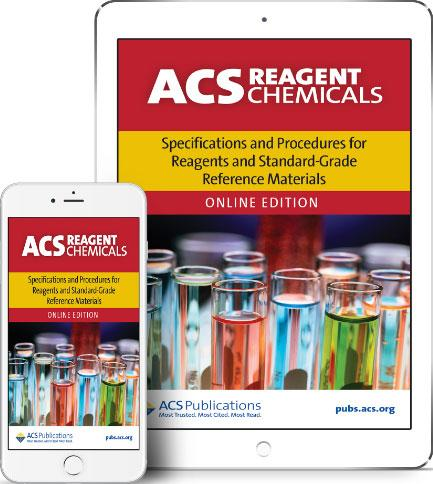
- Mobile-friendly operation
- Live links between reagents and methods
- HTML or printable PDF formats
- Fresh, user-friendly interface
You can search ACS Reagent Chemicals in OskiCat or access it through the Chemistry and Chemical Engineering Library Guide under Properties and Data. Contact the Chemical Information Librarian, Kortney Rupp with any issues or questions.
NEW DMPTool Launched!
A shiny new version of the DMPTool was launched at the end of February. The big change, beyond the new color scheme and layout, is that it is now a single source platform for all DMPs. It now incorporates the codebase from other instances of the program from all over the world, including: DMPTuuli (Finland), DMP Melbourne (Australia), DMP Assistant (Canada), DMPOnline (Europe), and many more! The move was made to combine all platforms into one in order to focus on best practices at an international level. Please learn more about the new instance by visiting the DMPTool Blog.

Cambridge Structural Database 2018 Available
The 2018 Cambridge Structural Database System (including ConQuest and Mercury) is available for downloading from the UC distribution site. The Cambridge Structural Database is crystal structure database, with over 900,000 entries for organic and organometallic compounds.
Downloading CSD:
- You must be on the campus network or wifi or using VPN to access the files on that page.
- Don’t forget the site and confirmation codes, which you can get by clicking Berkeley (UCB) link. You’ll need those codes during the CSDS installation.
- CSDS is available for Windows, OSX, and Linux/Unix. It is recommended that you uninstall CSDS 2017 before you start this installation.
- There’s an additional Windows application that can be downloaded separately. CrossMiner is a “novel tool that allows crystal structure databases such as the Cambridge Structural Database (CSD) and the Protein Data Bank (PDB) to be searched in terms of pharmacophore queries.”
- You can also search the CSD structures through WebCSD, without installing any software.
CSDS Documentation:
- What’s new in the 2018 release.
- Information about CSDS, including links to the specific databases.
- Documentation for CSDS.
Please contact Kortney Rupp if you have questions about CSD.
Love Data Week 2018!
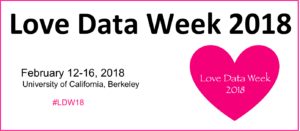
For your consideration: Electronic Laboratory Notebooks
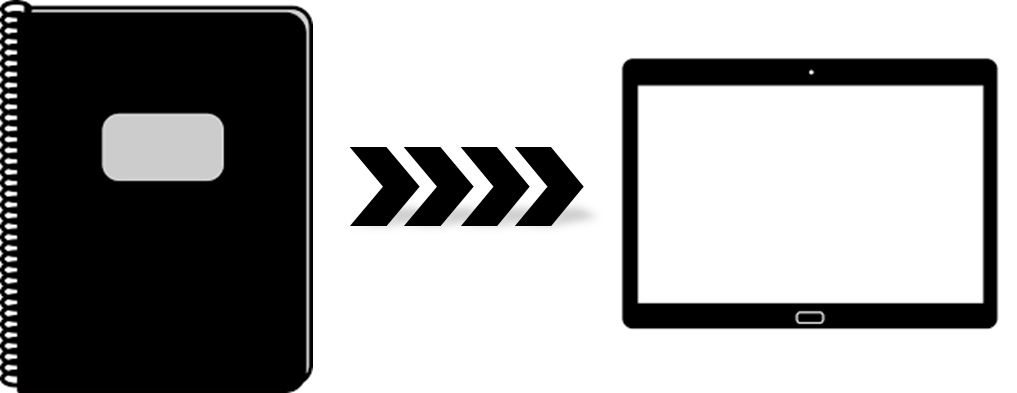
As a previous research chemist, I spent a lot of time populating laboratory notebooks during my undergraduate and graduate research. I used to pride myself in keeping what I thought to be a notebook in which the experiments could all be reproduced at any time (naive, I know). When I joined a research group in graduate school, my advisor told me we were going to use Microsoft OneNote as our group notebook. At first, I was confused and hesitant about making the switch. My natural my workflow and data organization had to dramatically change to adjust to the digital recordkeeping environment I now found myself in. I soon realized the transition would allow me to focus more on the science and less on the printing, pasting, and handwriting. As an atomic force microscopist, I found it quick and easy to import digital images, chemical structures and screenshots of methods directly from digital articles. Over time I developed new strategies for organization including color coding to tie together sample preparations with the corresponding AFM images. I also created file naming standards and table of content pages to allow my labmates and advisor to search my notebook easily. These strategies ultimately allowed me to conduct my work in a more efficient and easily reproducible way and I now cannot imagine a world in which I could conduct science using a paper notebook.
Adopting any new workflows into an already complicated, time-sensitive environment can seem overwhelming and possess a steep learning curve. Libraries and librarians at UC Berkeley are well positioned to help researchers improve their productivity, transparency, and reproducibility by adopting a digital recordkeeping system. To try and provide some insight into how to determine which ELN to use and a strategy to make the transition to ELNs, I have created a guide and am available to assist throughout the transition process.
Alice Fan, MD: New Cancer Therapies & Women in Science
The last Nanoscale Science and Engineering (NSE) seminar of the semester is scheduled for Friday, December 1st from 2:00 – 3:00 in 180 Tan Hall. Alice Fan, from the Stanford Medical School, will be speaking on new nanoimmunoassays that enable the isolation and analysis of tumor cells. Following her talk, the Graduate Women in Engineering (GradSWE) will host a coffee hour from 3:30-4:30 in 242 Sutardja Dai Hall.
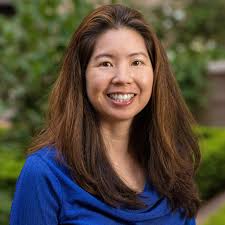
bioRxiv: a free open access archive for unpublished preprints in the life sciences
- Bioengineering
- Cancer biology
- Cell biology
- Ecology
- Epidemiology
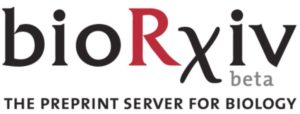 Genomics
Genomics- Molecular biology
- Neuroscience
- Pharmacology and toxicology
- Scientific Communication and Education
Life, gene editing, and rock ’n’ roll: 5 things we learned from Jennifer Doudna’s talk
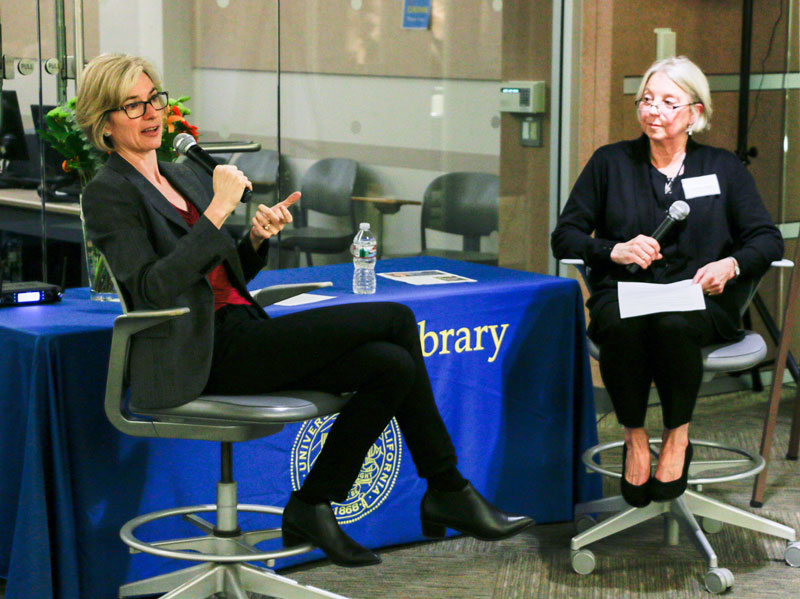
When Jennifer Doudna was in high school, a guidance counselor called her into his office to talk to her about her career.
“What do you want to be when you grow up?” Doudna recalls him asking.
“I want to be a scientist,” Doudna said.
“Girls don’t do science,” she remembers him saying.
She has been proving him wrong ever since.
For one, the UC Berkeley professor co-invented CRISPR-Cas9 gene editing, hailed as the biggest biological breakthrough since the discovery of DNA’s molecular structure in the 1950s. The technology comes with the possibility of curing devastating diseases and improving lives but also raises ethical questions.
“If you have a tool that allowed precision changes to DNA to be made,” she said, “that provides a way that, in principle, one could alter human evolution by making changes that could become inherited by future generations.”
In the years that followed, Doudna has become instrumental in raising awareness and broadening understanding — within the scientific community and beyond — about the technology. It’s a duty Doudna doesn’t take lightly. “It’s something I feel deeply passionate about,” she said.
Doudna sat down in front of an audience Tuesday in the Bioscience & Natural Resources Library for a chat about her book (“A Crack in Creation” is out this year), her life, and her scientific breakthrough.
Here are five things we learned.
1. Her upbringing in Hawaii influenced her career path.
Growing up, Doudna lived in Hilo, a “small, rural town,” on the big island of Hawaii. It was living in Hawaii, surrounded by diverse wildlife (“blind cave spiders and all kinds of interesting plants,” she said) that sparked her lifelong love of science.
“When I think back on how I got interested in science and biology and chemistry,” she said, “it really, I think, stems from growing up in that island environment and wondering about how organisms can evolve to live in a setting like that.”
And in 10th grade, Doudna’s interest in science deepend, thanks to a chemistry teacher, Miss Wong, who “taught us kids that science was about solving puzzles — it was about asking questions and figuring out how to answer them.”
“I absolutely loved it,” she said. “It was fun, and I started imagining that it would be really great to grow up and have someone pay me to do what I thought was just kind of fun — playing around in a lab.”
2. Even bioscientists get the blues.
In her 40s — and well into her second decade of running her lab — she started to question whether her work was going to have an impact.
“I really almost had sort of a midlife crisis,” she said.
She took a leave of absence at Berkeley for an opportunity at a company — which, in retrospect, was the wrong move.
Although it was a great company, she began to realize, “It was just the wrong fit for me,” she said. “I felt it in my gut. This is not where I’m meant to be.”
“I realized that I just loved working with students. I loved being at a public university,” she said. “I really believed in that mission of having education available to anyone who can come and wants to learn and wants to work at this wonderful place that we have here.”
She asked her former colleagues at UC Berkeley if she could return.
“They took me back,” she said.
3. She didn’t like the name of her book at first.
Neither Doudna nor co-author Samuel Sternberg liked the title “A Crack in Creation,” which their editor suggested.
“It sounded very ominous, somehow,” she said.
Neither could think of a better title, and they were eventually won over.
“It does sort of convey this idea that … we’re sort of at a fork in the road, in a way, and it really does feel kind of profound at times to me,” she said. “We’re at a point where now we as a species have a tool that will allow us to control … who we are.”
4. She has a complicated relationship with the spotlight.
“People have called me the public face of CRISPR, and I’m sort of shocked by it,” she said.
But with glare of the spotlight comes the opportunity to raise awareness and educate the public.
“I feel sort of a sense of honor that I’ve been sort of thrust into this position of being a spokesperson for science, and it’s something that I feel deeply passionate about,” she said.
5. She had a brush with rock royalty.
With her profile having reached new heights come opportunities that she had never previously imagined.
“I was at a thing in London not long ago, and I turned around, and behind me was (rock guitarist) Jimmy Page,” she said. “We just struck up a conversation. We started talking about science, and about guitars, and Led Zeppelin.
“And I said to him, ‘I’m such a fangirl. I mean, I listened to your music growing up. Would you mind if I took a picture with you?’
“And (now) I have a picture with Jimmy Page.”